Nov 5 – Kamakura (Tsurugaoka Hachiman Shrine, Kotoku-in, Hase Dera)
It was very hard planning our trip to Kamakura. The more we read about it, the more we realized there was to see and do, but we did not want to feel rushed and miss things by going too fast. So we decided to go to several of the major sites and really enjoy them in detail. We have only been in Japan for a few days, but know that we will come back.
Getting there was surprisingly easy. Taking the subway from Ueno to Tokyo Station and finding the correct platform was harder than taking the Yokosuka line train the whole way to Kamakura; the latter was just an hour ride with views of Tokyo Bay on one side and hills on the other.
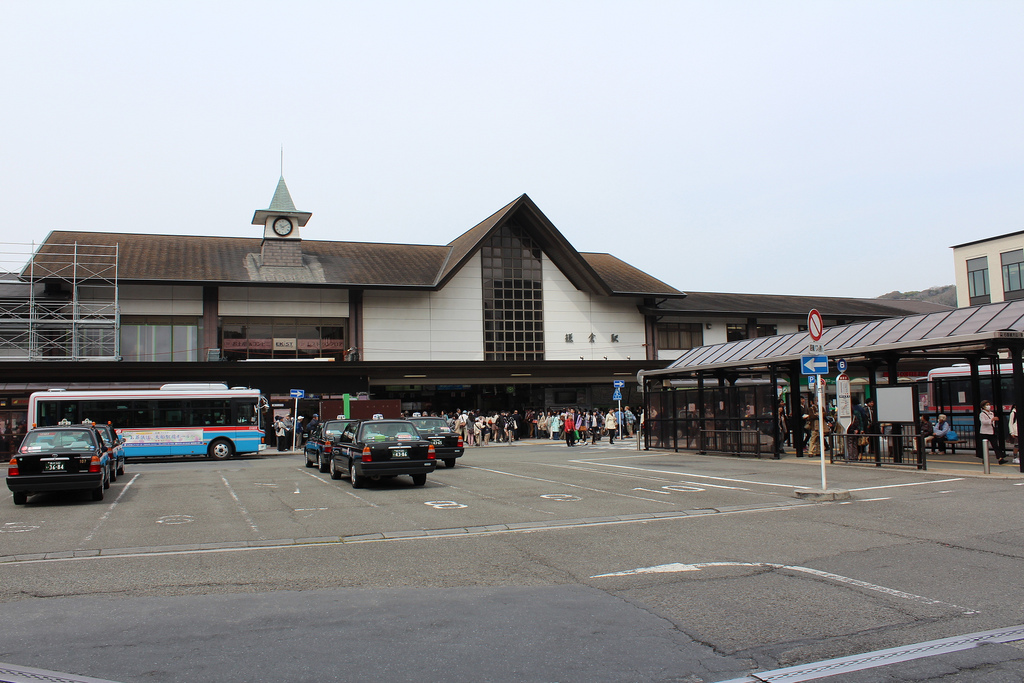
JR Kamakura Station
Upon arriving at the station, we found a tourist map in English and headed to the Tsurugaoka Hachiman Shrine. Though technically a religious place, the Kamakura Shoguns would conduct a lot of their business there, under the watchful eye of the deity. They prayed to him for success in battle, so it was definitely an important place in the tumultuous past. Now it was an impressive, ornate building on the top of a hill, still showing the power and wealth of the ruling class after so many centuries.
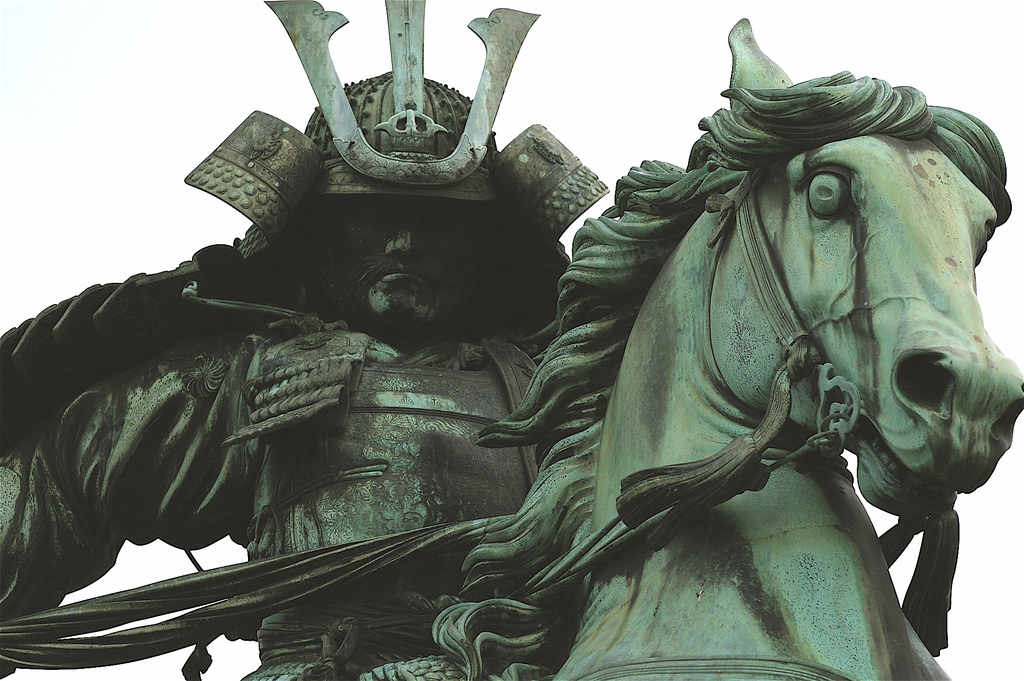
Kusunoki Masashige – Kamakura Shogun
Actually, we were surprised to find a pleasant garden surrounding a lake, and a quaint shrine on an island in the middle of it. We thought there were turtle statues in the lake, but were surprised when they moved and we realized they were real. Scattered around the grounds were several other shrines to lesser deities, too. I really liked the red one to the goddess Benten, but we did not get too close because we heard that she was very jealous of lovers, and we did not want her to cause any mischief on our honeymoon.
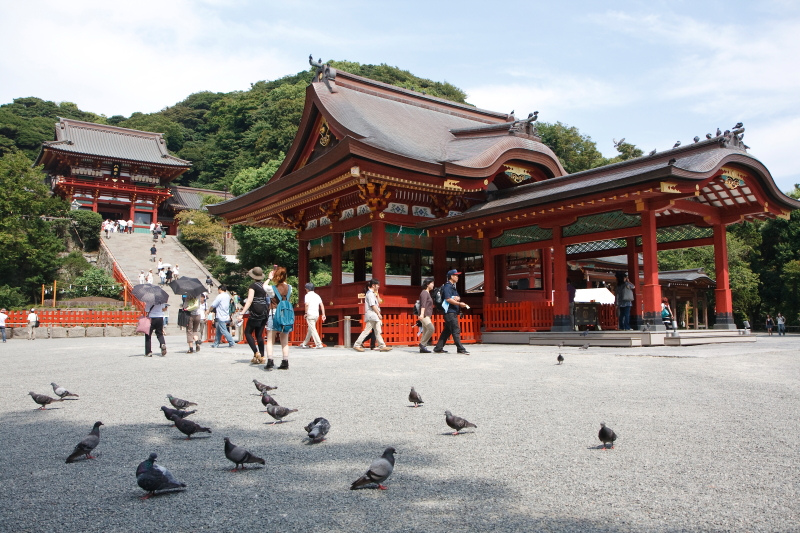
Tsurugaoka Hachiman (photo: Nan-Cheng Tsai)
It was enjoyable to take our time looking at everything, and at a faster pace probably would have missed a lot. For example, we were saddened to see a stump by the stairs which had been a ginkgo tree. Stopping to see, we found out that it was the site of a famous assassination centuries ago, and that the tree itself was so old and venerable that it was worshiped as having a soul of its own. Upon closer inspection, there were new shoots growing out of it; it was not dead despite having been blown down in a severe storm in 2010.
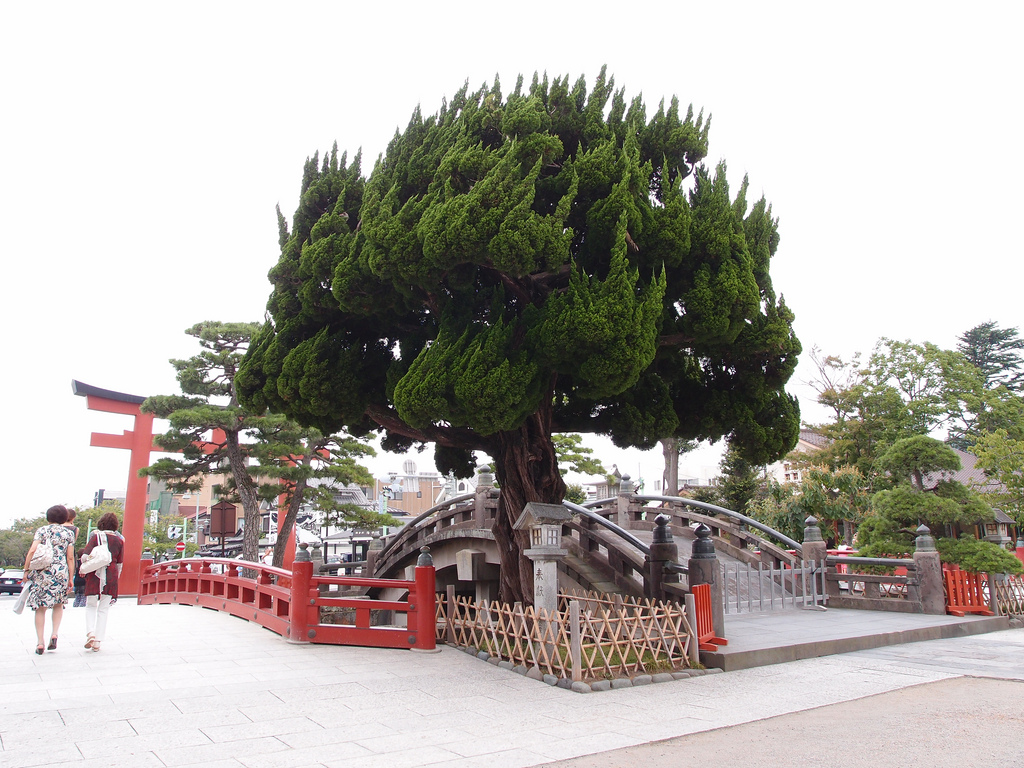
Tsurugaoka Hachiman-gu Shrine @ Kamakura
We had debated whether to take public transportation from Tsurugaoka Hachiman Shrine or walk between our destinations, and decided on the latter because on the map they looked quite close. It was really enjoyable, too, because there were so many tiny shops and restaurants along the way.
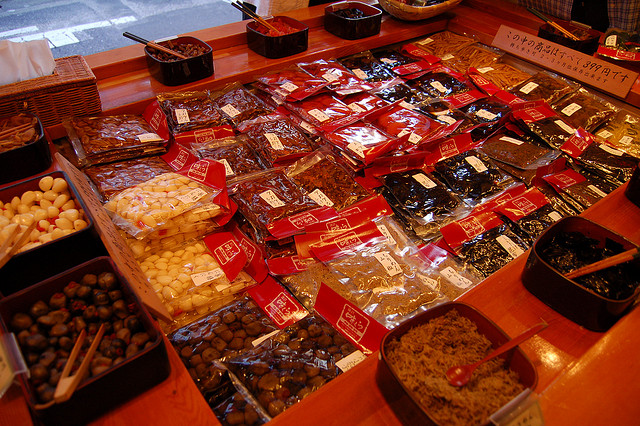
Pickles in Kamakura (photo: Ning Ham/flickr)
Of particular interest were the pickle shops. The past few days we had tried some wonderful pickles as side dishes with our meals. We had no idea what some of them were, so it was fun to go into the shop where there were samples in front of the cases. I especially liked the eggplant in bright pink brine, and Paul liked the daikon soaking in something yellow. We consulted with the hovering sales lady, who advised us about which ones needed refrigeration and which would travel well in our luggage. Upon leaving, we realized that pickles may be a strange souvenir, but we sure look forward to having them when we return home.
![Mugita-Mochi [ 小町通り / 鎌倉 ]](https://www.holidaytravel.cc/Article/UploadFiles/201602/2016022415541400.jpg)
Mugita-Mochi [ 小町通り / 鎌倉 ]
It turned out to be a fair distance to the Daibutsu, or giant Buddha. I was looking forward to seeing it, but also a bit nervous. One of my favorite photos from my Japanese grammar book was of the statue, and I didn’t want to be disappointed by seeing it in person.
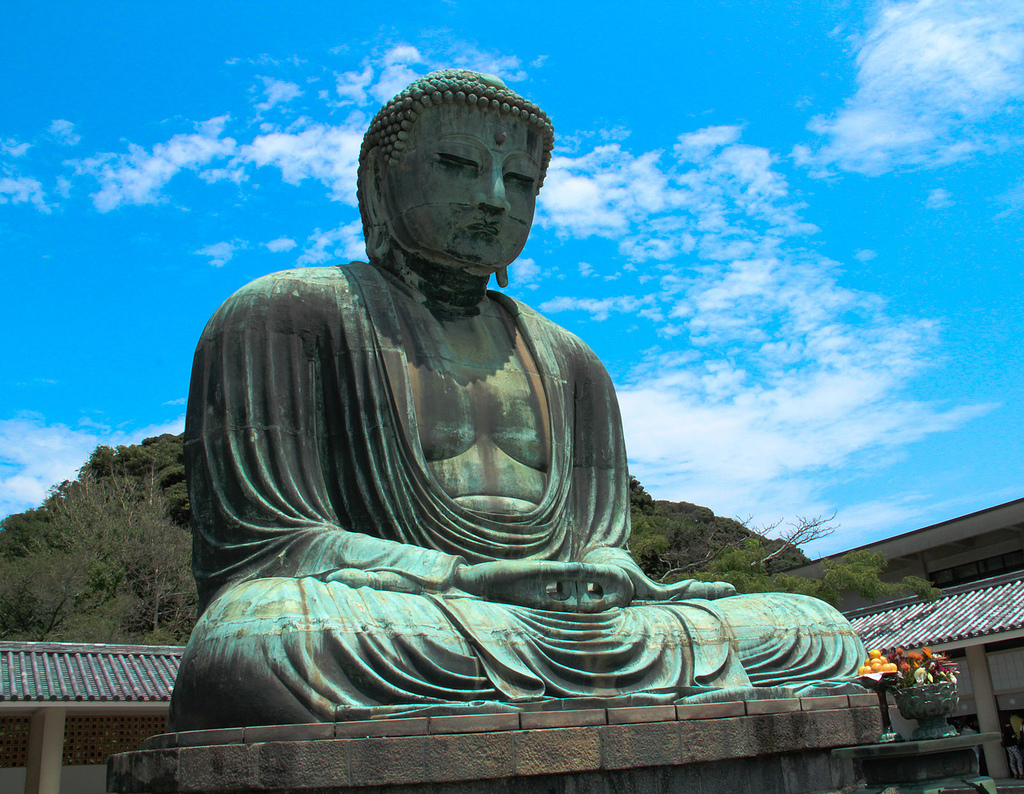
Daibutsu
I needn’t have worried. The temple, Kotoku-in, was rather on the minimalist side. There was a display of giant straw sandals, a few stones carved with calligraphy, and a gift shop. The Daibutsu standing alone in the center was the focus, and it was beautiful. The face was so enigmatic. Though stylized, it seemed to be living, and I could almost imagine that I saw it breathe. The trees changing colors on the hill behind it provided just the perfect backdrop.
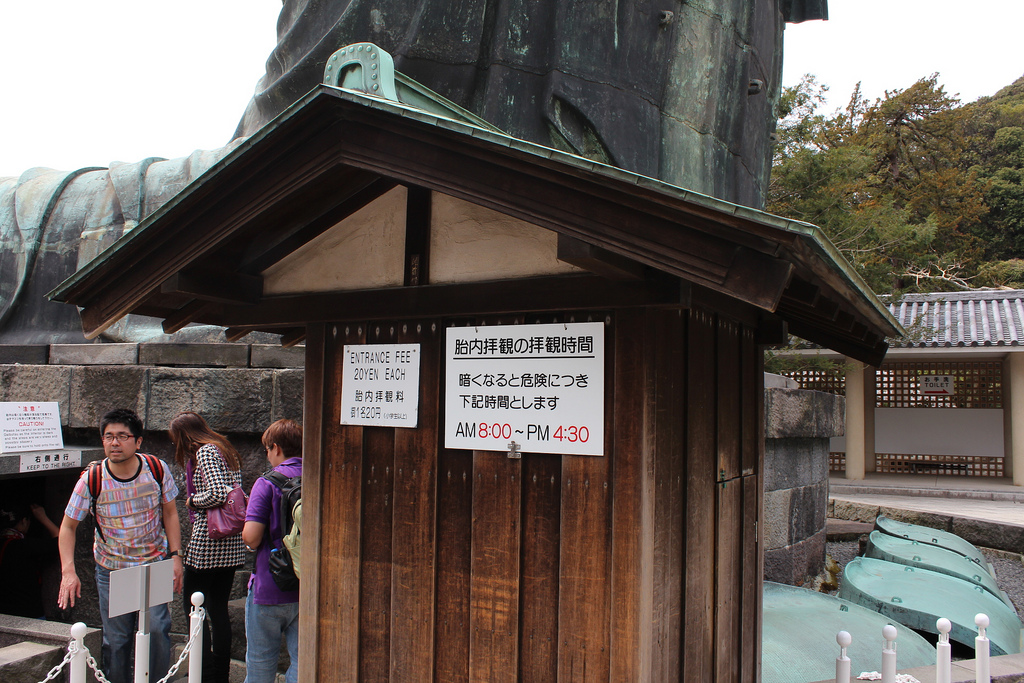
Daibutsu interior entrance ticket booth
It was possible to go inside for an extra twenty yen. It felt really weird, almost sacrilegious, to climb the tight little stairs into the chamber crowded with other visitors. It was fascinating to see the unfinished interior with its giant lines of welds and buttresses, lit by two shutters open in the Buddha’s back. I am glad we went in.
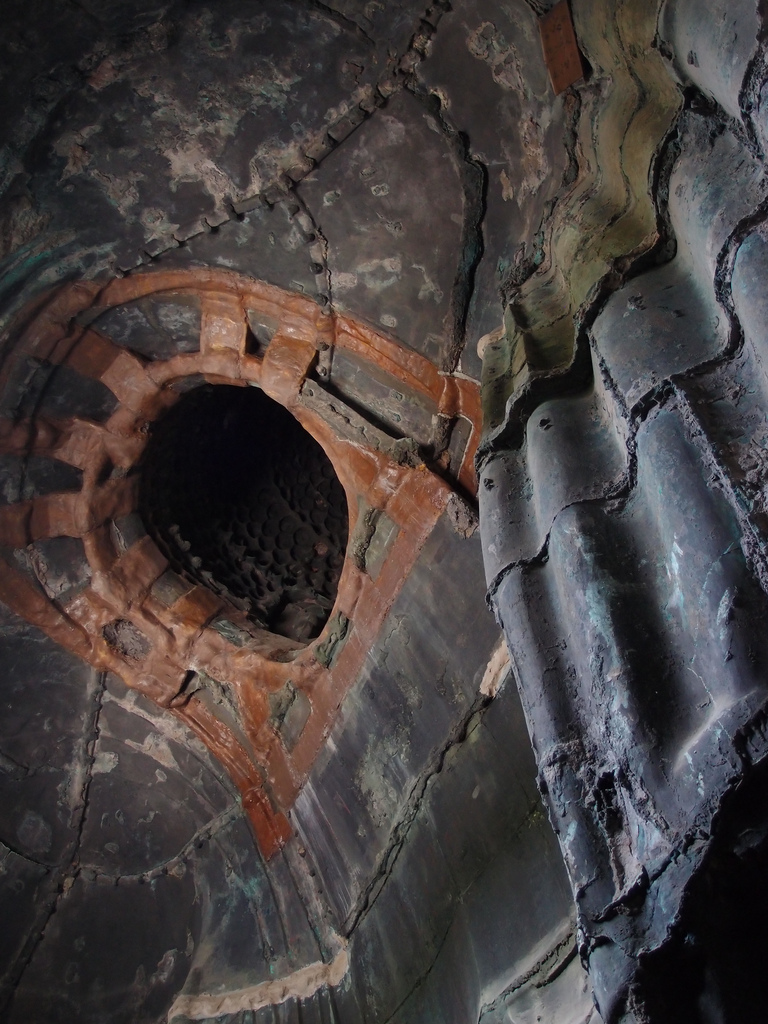
Inside the Great Buddha @ Kamakura
By that time, we were ready for lunch. On the way to the temple we had seen a shop selling senbei. There was a line of Japanese tourists waiting for the large crackers which was being freshly toasted on a grill. The clerk would slap some sauce on, flip it for even baking, then wrap it in a large piece of seaweed for the customer to take. They smelled great, so we shared one on the way back. It was piping hot, salty, and really delicious. It gave us the energy to look for a good restaurant.
Senbei in Kamakura (photo: Eddy Chang/flickr)
We found a café specializing in soba noodles. It had a little garden that we could see while eating, very picturesque. The soba came on a bamboo tray with a dipping sauce. Very yummy, but I am afraid that the serving size was not designed for the Western appetite, and we were left wanting more. We decided to quickly visit the next place, then have a second lunch.
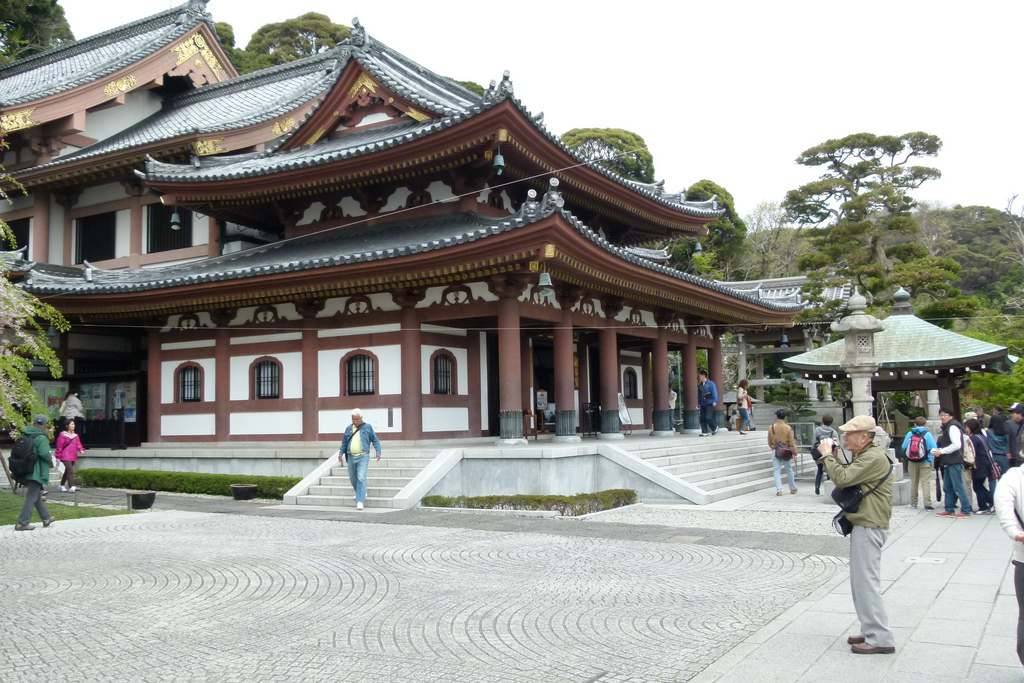
Hase Dera Kamakura (photo: CoCreatr/flickr)
Hase Dera was on our schedule because it was so close to the Daibutsu, up a rather steep hill. It was famous for an 11-headed wooden Kannon statue. Supposedly a craftsman carved it years ago and threw it into the ocean. It landed here, so that is where they built a temple. After seeing the Daibutsu, we assumed that Hase Temple would also be a quick visit just to see the statue, but we could not have been more wrong.
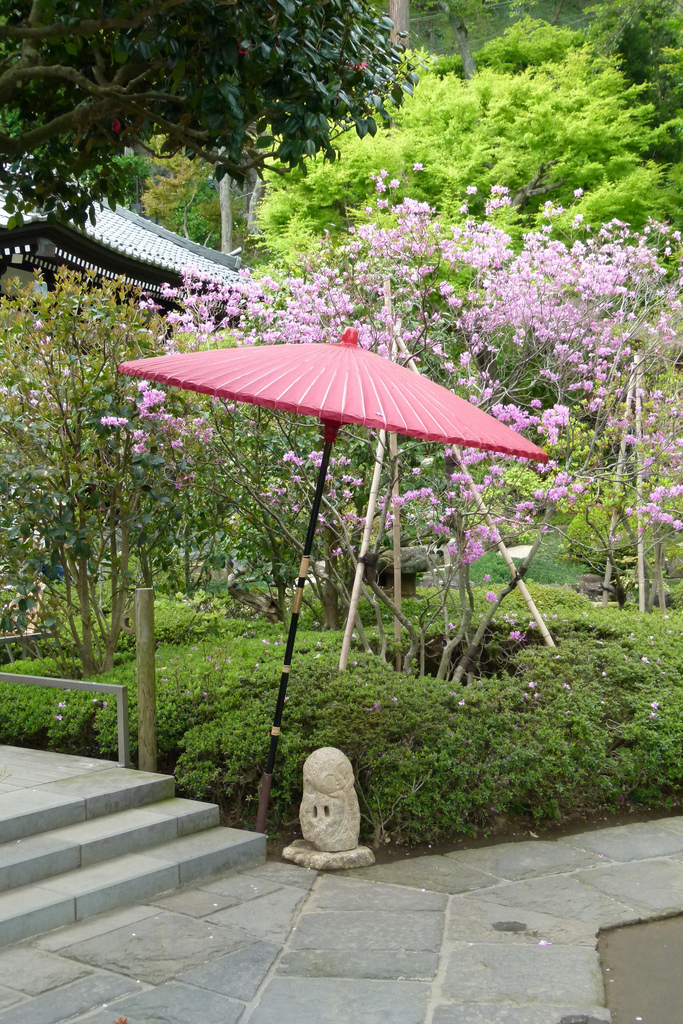
Red Umbrella in Hase-dera Garden
The gardens were extensive and beautiful; the temple with the Kannon was tucked in among so many other things to see. Foremost for us was the view; after that long climb up the hill, there was a clearing overlooking the Pacific Ocean. Behind us was a hill covered with hydrangeas, and there was a hiking path through them. We bought some iced tea from a vending machine and headed up, Paul raved about all the different varieties, and I just enjoyed the colors and time outside together.
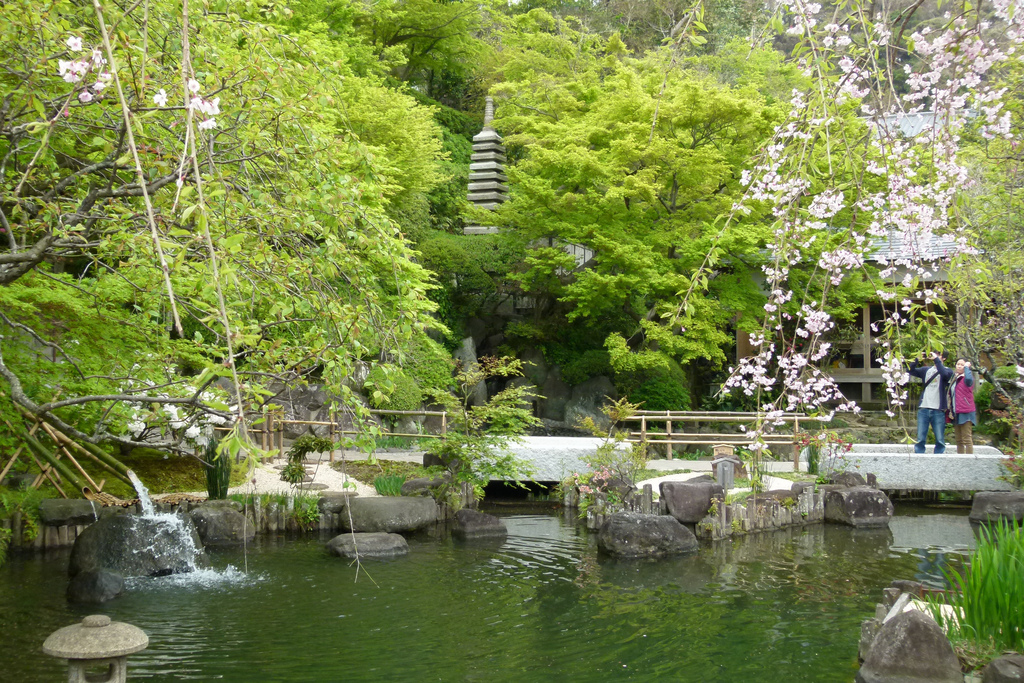
Hase-dera Garden
We ended up quite hot and sweaty before turning back to the temple. Below the temple was a formal garden with lush greenery and pools of koi. There was an area that had hundreds of little Jizo statues all lined up together. We had not stopped to look at these things closely on the way up, so took our time on the way back to the entrance. Imagine our surprise when we stumbled across the entrance to a cave!
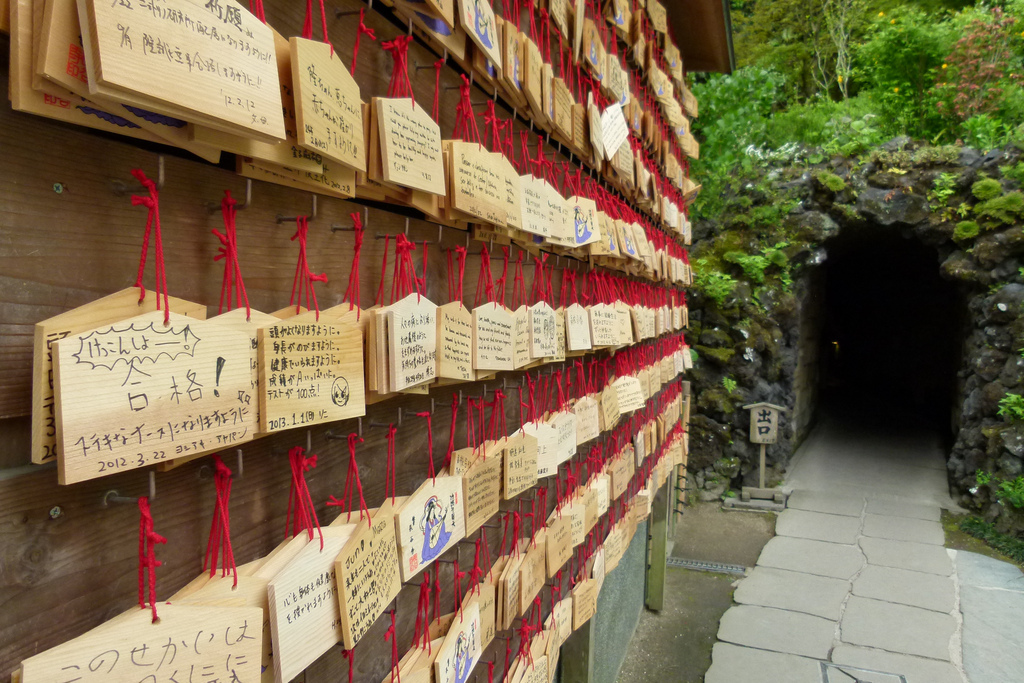
Hase-dera Benten Kutsu Cave
The cave was so low we needed to stoop while walking through. It was dimly lit with stone statues set in niches with small candles burning in front of them. Water dripped from the ceiling and we were assaulted with the smell of warm wax, incense, and earth. Everyone was hushed and solemn walking through the caverns, which continued a greater distance than we would have supposed. The final room was packed with thousands of little votive statues stacked on top of each other and spilling out onto the floor. We did not know the meaning.
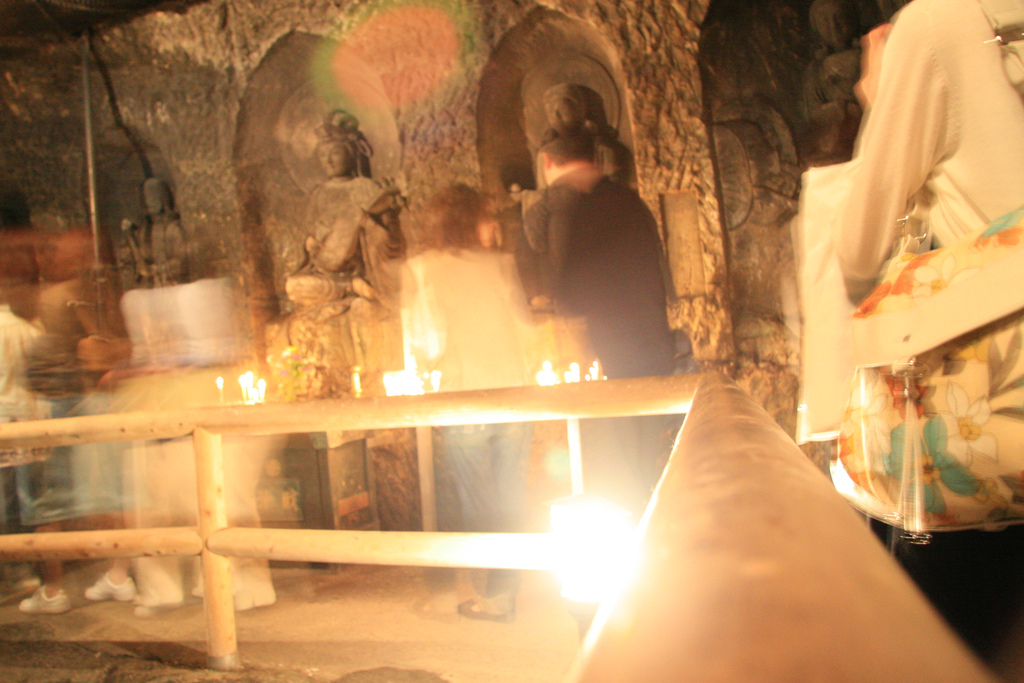
Hase Dera Cave (photo: syasara/flickr)
At last we emerged and saw the rest of the garden. It was much later than we had anticipated, so we decided to skip the final place on our itinerary and have a relaxing dinner before heading back to Tokyo. Our feet were tired from all the walking! We found a small place specializing in unagi and enjoyed the sweet, cooked eel with a light, refreshing beer. It was a perfect way to end our visit to Kamakura.
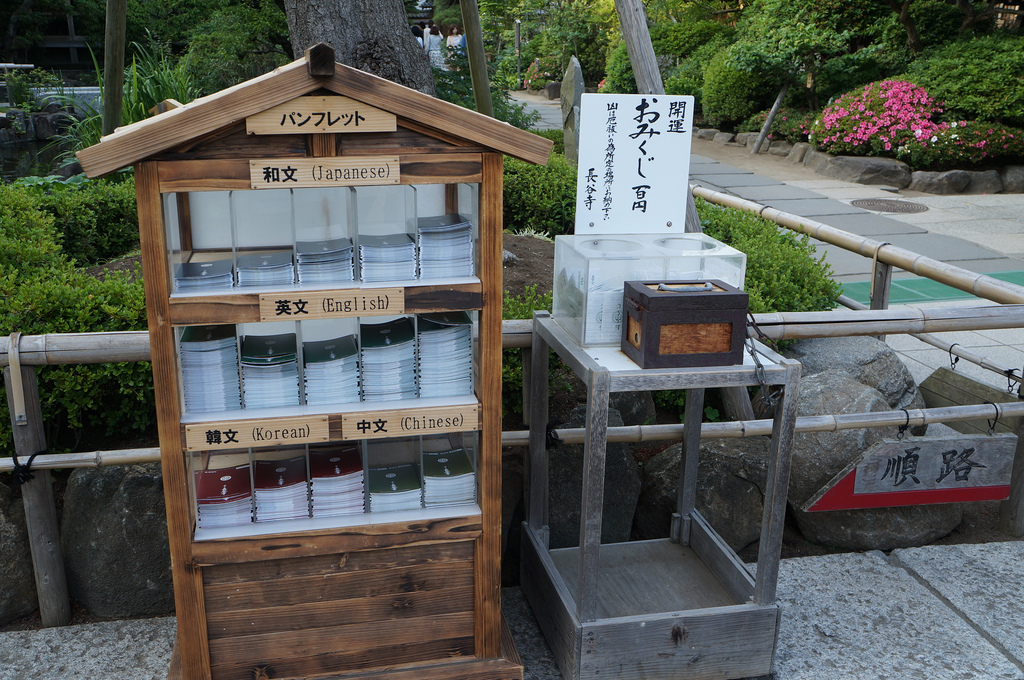
Pamphlets at temple, many languages!
 photos by:
FunkBrothers &
Jim Epler,
*_*,
d'n'c,
Gordon_Cameron,
FunkBrothers,
*_*,
CoCreatr,
CoCreatr,
CoCreatr,
Kouki Kuriyama
photos by:
FunkBrothers &
Jim Epler,
*_*,
d'n'c,
Gordon_Cameron,
FunkBrothers,
*_*,
CoCreatr,
CoCreatr,
CoCreatr,
Kouki Kuriyama